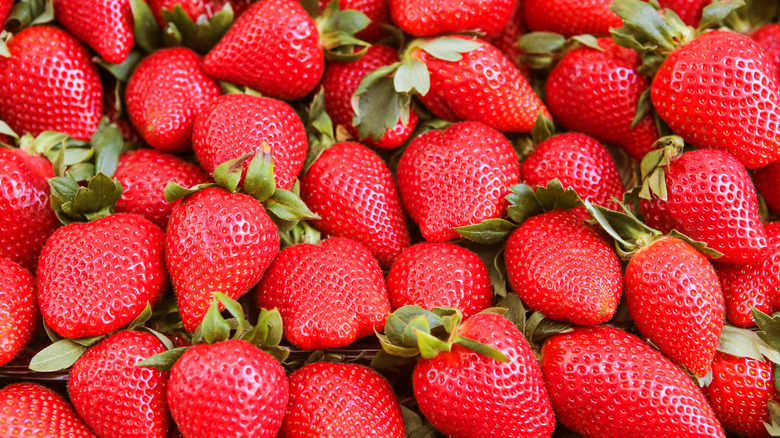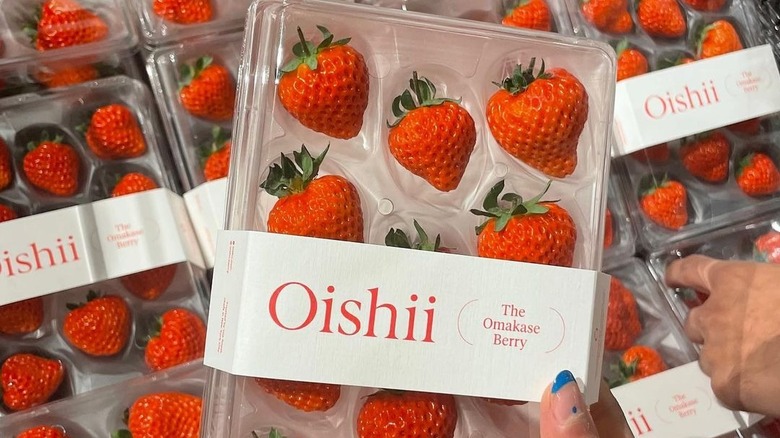The Luxury Strawberries You Should Be Buying At Whole Foods
There's nothing quite like sinking your teeth into a fresh, juicy strawberry — a fruit that is quintessential of summertime and symbolic of the sweetness of life. Whether you enjoy strawberries alone, coated in chocolate, mixed into a salad, infused into jams, jellies, and cocktails, or incorporated into baked goods, the seed-studded starlets offer a pleasant flavor and add a bright pop of color to any dish they touch. Like most fruits, strawberries also pack a solid amount of nutrients, as they are rich in antioxidants, fiber, vitamins B9 and C, manganese, and potassium, per Healthline.
When you imagine a typical strawberry, you probably envision a vivid red, heart-shaped fruit. But there is so much more to the iconic ruby-hued fruit than meets the eye. In fact, according to the Chatham Daily News, there are more than 600 different strawberry varieties — all of slightly different shapes, sizes, and flavor intensities — cultivated and eaten around the globe. One species in particular has become wildly popular among consumers in recent years — at least to those who don't immediately gasp at the high price tag.
Omakase strawberries will cost you a pretty penny
If you reside in New York, New Jersey, or Los Angeles and go grocery shopping at Whole Foods, you may come across a type of strawberry in the produce section that catches your eye due to its plump, soft character and unorthodox packaging. The Omakase berry is a one-of-a-kind find that stands out in the crowd — and for good reason. The company that harvests the legendary berry, Oishii, is a vertical strawberry farm that focuses on environmentally friendly practices without the need for pesticides and other potentially harmful chemicals. When Omakase strawberries were first sold, they had a lofty price point: $60 for a six-pack, to be exact. Since then the price has decreased, but not by much. You can now snag an eight-pack for $20.
Hiroki Koga, co-founder and CEO of Oishii, told The New Yorker, "There are customers who buy multiple trays every week. That's, like, thousands of dollars, just on strawberries." What makes Oishii's berries so special when compared to most American growers is that they are not mass produced and are farmed with the help of robotics to help simulate growing conditions in Japan, thereby giving them their signature look and flavor.

